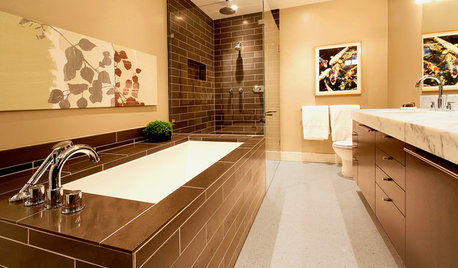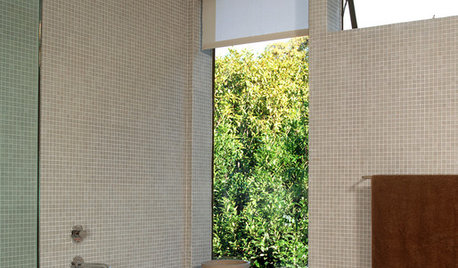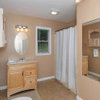Bath exhaust fan in cathedral ceiling: problem
microxl
15 years ago
Related Stories

HOUSEKEEPING10 Problems Your House May Be Trying to Show You
Ignore some of these signs and you may end up with major issues. We tell you which are normal and which are cause for concern
Full Story
KITCHEN DESIGNHow to Choose the Right Hood Fan for Your Kitchen
Keep your kitchen clean and your home's air fresh by understanding all the options for ventilating via a hood fan
Full Story
KITCHEN APPLIANCESLove to Cook? You Need a Fan. Find the Right Kind for You
Don't send budget dollars up in smoke when you need new kitchen ventilation. Here are 9 top types to consider
Full Story
ARCHITECTUREAre Vaulted Ceilings Right for Your Next Home?
See the pros and cons of choosing soaring ceilings for rooms large and small
Full Story
BATHROOM DESIGNDesigner Trick: Take Your Shower Tile to the Ceiling
Tile the whole wall in your shower to give your bath a light and lofty feel
Full Story
KITCHEN OF THE WEEKKitchen of the Week: Fans of Traditional Style Go For a ‘Mad Men’ Look
The TV show inspires a couple to turn their back on the style they knew and embrace a more fun and funkier vibe in their kitchen
Full Story
BATHROOM DESIGNFloor-to-Ceiling Tile Takes Bathrooms Above and Beyond
Generous tile in a bathroom can bounce light, give the illusion of more space and provide a cohesive look
Full Story
DECORATING GUIDES21st-Century Looks for Shabby Chic Fans
How to update a style that's been popular since the 1990s? With new colors, crisper lines and contemporary settings
Full Story
DECORATING GUIDESHow to Work With a High Ceiling
Learn how to use scale, structure and shapes to create a homey-feeling space below a grand ceiling
Full Story
COLOR11 Reasons to Paint Your Ceiling Black
Mask flaws, trick the eye, create drama ... a black ceiling solves a host of design dilemmas while looking smashing
Full Story








pepperidge_farm
microxlOriginal Author
Related Professionals
Baltimore Kitchen & Bathroom Designers · Brownsville Kitchen & Bathroom Designers · Soledad Kitchen & Bathroom Designers · St. Louis Kitchen & Bathroom Designers · St. Louis Kitchen & Bathroom Designers · Vista Kitchen & Bathroom Remodelers · Warren Kitchen & Bathroom Remodelers · Fort Myers Glass & Shower Door Dealers · Salt Lake City Glass & Shower Door Dealers · Lackawanna Cabinets & Cabinetry · Wyckoff Cabinets & Cabinetry · Campbell Window Treatments · Del City Window Treatments · Kent Window Treatments · Los Angeles Window Treatmentspepperidge_farm
pepperidge_farm